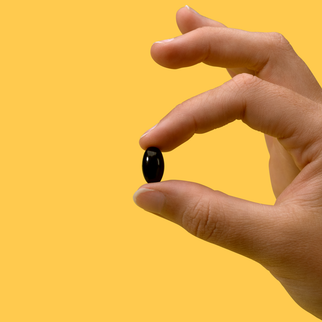When we read about heart-pumping exercises, thoughts of HIIT (high-intensity interval training) sessions or a high-energy workout routine tend to come to mind. While these high-impact exercises certainly have their benefits, they might not be the best choice for everyone — especially those concerned about their joints.
Our joints are easy to take for granted when we’re still young. Their ability to bounce back after a HIIT workout is usually as easy as some rest and a little ice… but after reaching the age of 40, our joints and muscles don’t recover the same way.
For that reason, more and more people are embracing the concept of low-impact cardio workouts. It’s the perfect solution for anyone looking to keep their heart rate up during workouts without burdening their joints too much.
What’s the Difference Between High-Impact and Low-Impact Cardio Workouts?
The primary distinction between each type of exercise lies mainly in the physical impact on our bodies.
High-impact cardio typically involves exercises like jumping jacks, burpees, sprints, and plyometric drills. These exercises demand more from our joints, as they involve activities where both feet might leave the ground simultaneously.
If you’re looking for a high-intensity workout that helps build muscle and improve cardiovascular endurance, then high-impact cardio could be perfect — however, the caveat is that there is a higher potential risk of injury, especially for the joints.
On the other hand, low-impact cardio exercises have a much gentler approach. Because they ensure that at least one foot remains grounded, they can significantly reduce strain on the joints.
Low-impact doesn't mean lazy or low-intensity. These workouts can still be very intense and are perfect for individuals aiming to decrease exertion on the joints without missing out on the health benefits of aerobic exercise.
Why Is Low-Impact Cardio Crucial for Joint Health?
The benefits of low-impact cardio extend beyond mere joint safety. These exercises cater to a holistic health approach for your joints and offer the following advantages:
- Stress reduction on joints: By eliminating the wear and tear of high-impact activities, low-impact workouts serve as a protective measure, ensuring your joints maintain optimal health and longevity.
- Improved joint mobility: The gentle movements characteristic of these exercises not only enhance overall flexibility but can also help reduce the chances of joint rigidity and stiffness that may arise from inactivity.
- Improved bone density: Incorporating low-impact cardio helps strengthen your bones, which can decrease your vulnerability to conditions like osteoporosis, especially in older age.
- Weight management: Maintaining a healthy weight is crucial for easing undue pressure on joints. Low-impact cardio offers a sustainable approach to weight loss, merging efficiency with joint care.
- Increases balance and stability: Beyond muscle building and increasing your heart rate, these workouts hone proprioception and coordination. As balance improves, so does overall posture and movement control, helping to reduce the chances of accidental slips and injuries.
How Do You Warm Up for a Low-Impact Cardio Session?
Preparing your body for a workout is similar to tuning an instrument before a performance. It's essential for optimizing output and for preventing potential harm.
Start your warm-up with a 5 to 10 minute walk. This exercise not only gets your blood circulating, but also sets a rhythmic tone for the rest of the workout. As you walk, consciously focus on engaging your core, maintaining a straight posture, and taking deep, even breaths.
Transition from walking to stationary leg swings. With your feet hip-width apart, hold onto a sturdy surface for balance and swing one leg forward and backward in a controlled manner. This action activates the hip joints and stretches the hamstrings.
To engage your upper body, introduce arm circles. Start with small circles, gradually enlarging them. This movement warms up the shoulder joints and prepares the arms for more intensive exercises.
What Are the Best Low-Impact Cardio Workouts for Beginners?
For anyone dipping their toes into the vast pool of fitness, the guidance of a certified personal trainer (CPT) can be helpful. They can ensure that your exercises align with your fitness levels, mitigating any risk of overexertion.
If you're mapping out your journey solo, here's a list of low-impact cardio workouts for beginners:
1. Walking
Walking is the foundation of human movement. As a natural home workout, it conveniently fits into any schedule, whether it's a morning sweat session or an evening stroll.
Walking helps stimulate the cardiovascular system, bolsters heart health, and gives you the mental benefits of the outdoors, all without needing any special equipment.
2. Swimming
Swimming is a full-body workout that engages every major muscle group.
As you move through the water, its buoyant nature acts as a cushion, shielding your joints from strain. This makes swimming both invigorating and gentle, offering a powerhouse of cardiovascular and muscular benefits.
3. Cycling
Cycling is the perfect blend of adventure and fitness. Whether you're using a stationary bike and feeling the burn in a spin class, or venturing outdoors with the wind against your face, cycling targets your quads, hamstrings, and calves without putting undue strain on your joints.
It provides a joint-friendly alternative to high-impact activities while still delivering a substantial cardio workout.
4. Elliptical
An elliptical offers a fusion of walking, running, and climbing without the demanding impact on the joints. Its gliding foot platforms and synchronized arm handles make for a fluid, full-body motion.
By adjusting resistance and incline, you can tailor your workouts to the desired intensity, making this machine versatile for all fitness levels.
5. Rowing
Rowing is a combination of strength and endurance. Operating a rowing machine engages both the upper and lower body — as you pull the handle and slide on the seat, the rowing motion gives you a high-intensity challenge, while the seated nature makes sure your joints are spared from stress.
6. Water Aerobics
Water aerobics is like an aquatic dance party that blends the fun of an aerobics class with the gentle resistance of water.
The result is a low-impact workout that boosts cardiovascular health, muscle strength, and flexibility, all while being kind to your joints.
7. Yoga
Yoga emphasizes the art of balance, both physically and mentally. With its range of poses and sequences, yoga fosters flexibility, muscle toning, and core strength.
Beyond the physical, it also serves as a form of relief for the mind, welcoming tranquility, focus, and mental clarity, and working to support your mental health and resilience.
8. Step Aerobics
Elevate your fitness game with step aerobics. With a platform or step, step aerobics entails choreographed routines that test agility, coordination, and cardiovascular endurance.
While step aerobics intensifies a traditional aerobics session, it cleverly avoids high-impact jumps, making it suitable for those conscious of joint health.
9. Pilates
Pilates places emphasis on controlled movements and breathwork and zones in on the core, crafting a refined posture and strong abdominal muscles.
Simultaneously, it stretches and strengthens various muscle groups, promoting an elongated, toned physique and enhanced flexibility.
10. Tai Chi
Tai Chi, often described as "meditation in motion," hails from ancient Chinese martial arts. Its slow, deliberate movements cultivate balance, coordination, and strength.
As you flow from one pose to the next, Tai Chi nurtures not only physical agility but also mindfulness, grounding, and holistic wellness.
How Can You Incorporate Strength Training Into Low-Impact Workouts?
Blending strength training with low-impact cardio can be the key to a holistic workout routine. If you have dumbbells, exercises like bicep curls, tricep extensions, or shoulder presses can fortify upper body muscles.
The beauty of strength training lies in its versatility. Without equipment, your body becomes the prime equipment.
Here are just a few examples of bodyweight exercises that you can try when you have no equipment:
- Push-ups, which engage the chest and triceps.
- Lunges, which target quads and glutes.
- Squats, which fortify the glutes, hamstrings, and quads.
- Climbers, which activate the core while enhancing cardiovascular health.
- Glute bridges, which are unparalleled for a posterior chain boost.
By weaving these exercises into your regimen, you not only build muscle mass but also level up the efficacy of your cardio sessions.
Here at iwi life, we understand the importance of joint health, especially as you navigate the challenges of aging, daily wear and tear, and the occasional strenuous activity. Our focus on creating solutions for enhanced wellness has led us to delve deep into nature's treasure trove.
The result? Our sustainable, algae-derived omega-3 supplements.
Algae, a primary life source on our planet, contains powerful properties that support joint health. By harnessing the benefits of this incredible organism, we've crafted supplements designed to complement your fitness efforts and promote joint vitality.
With iwi life by your side, you have a dedicated partner in your journey to holistic wellness.
The Takeaway
Starting a fitness journey with low-impact cardio exercises, ranging from walking to tai chi, provides excellent health benefits.
While these exercises strengthen and support the body, it's also essential to further nourish and protect your joints from within. That's where our commitment to your health shines brightest.
At iwi life, we're not just offering supplements — we're providing a promise of a healthier lifestyle anchored in algae-derived nutrition. As you incorporate low-impact exercises into your routine, consider supplementing your commitment to joint health with iwi life’s omega-3.
Sources:
Living Healthier Through Low-Impact Exercise | The Nation's Health
The Best Types of Exercise When You Have Hip or Knee Pain | Harvard Health
Warm Up, Cool Down | American Heart Association
What Is the Right Balance of Strength Training to Cardio? | The New York Times





















